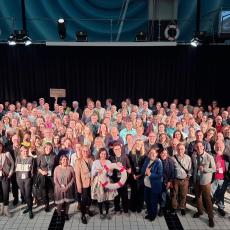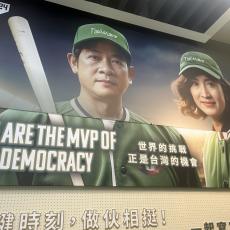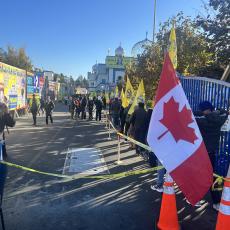On April 6 next year the first citizen-initiated referendum vote in Dutch history will be held in the Netherlands. Citizens can vote for or against ratifying the new association agreement that was concluded between the European Union and the Ukraine last year, writes Arjen Nijeboer.
Since this summer (July 1, 2015) it is possible to request a non-binding facultative referendum in the Netherlands. The introduction of this new tool ("Wet Raadgevend Referendum") is the result of more than 20 years of struggle between advocates and opponents of modern direct democracy. Just a few days after the coming into force of the new law, the Dutch parliament ratified the EU- Ukraine association agreement. Activists of the Burgercomité EU (the eurosceptic Citizens Committee on the EU [LINK]), who had been waiting for this referendum law for a long time, teamed up with the popular right-wing blog GeenStijl (No Style), whose slogan is "Biased, unfounded and needlessly offensive", to get the first 10,000 signatures and, in the second phase, 300,000 signatures.
Innovative signature gathering
The crucial factor was the online app that GeenStijl developed to collect signatures online and on cell phones. This was not offcially allowed, but GeenStijl made sure that people could "draw" their signature using the mouse, trackpad or - on a mobile phone - their fingertip. After some lobbying by unknown people, the Electoral Commission decided to accept these signatures. GeenStijl made their app accessible to anyone through Github. So from now on electronic signature gathering is possible in the Netherlands.
The initiators´ arguments
The initiators feel that the EU is becoming too powerful and too big and that this is happening too quickly – and they challenge this process. They seized the first opportunity to do so. They argue that the EU association agreement is a step in a long process of an eastward expansion of the EU and NATO, and that this agreement played a key role in the current civil war in Ukraine, because the Russians always made it clear that they would not accept the EU or NATO expanding right up to the Russian border. They also point out that European Commission President Jean-Claude Juncker, the European Parliament and the Ukrainian government have all stated that they are in favour of full EU membership for the Ukraine.
The political background
Since the mid 1990s, there have been continuous efforts to introduce direct democracy in the Netherlands. But because the Christian Democrats (CDA, CU, SGP) and the Liberals (VVD) are against, it is hard to get a two-thirds majority for a constitutional change. That´s why the advocates presented two law proposals to parliament: a regular law to make non-binding facultative referendums possible at the national level right now, and a constitutional change that would make this referendum binding and introduce it at all three state levels. The latter will still need a two-thirds majority after the next elections, and it is not certain that this change will be adopted in the near future. The Liberals have voted in favour of referendums on two occasions: during the "Purple Coalition" in the 1990s (because they had to give in to the D66 party) and they also voted in favour of the 2005 plebiscite on the European Constitution because their then-leader was personally in favour of that. Polls, however, show that the voters of all the large parties are in favor of direct democracy by large margins (70% to 85%).
Vivid local direct democracy
Meanwhile, at the local level, more than 150 popular votes on substantive issues have taken place - largely plebiscites on rearranging municipal borders, but also popular referendums and citizens´ initiatives (three municipalities, among them Amsterdam, have also given rights to people to trigger popular votes on their own proposals). About a quarter of all municipalities, as well as half the provinces, have made a local citizen-initiated (non-binding) referendum possible.
The proponents of modern direct democracy can point to the fact that historically, the Netherlands have always been innovative in democracy issues. During the Golden Age (the 16th and 17th centuries), the Seven Provinces of the Netherlands became one of the first republics in world history. It was a confederal country then, where local laws prevailed over national laws. The leaders of the seven provinces could only take decisions at the national level after first traveling back to their provinces to get approval. It was the invading French at the end of the 18th century who re-introduced the monarchy and introduced the current centralist, unitary state.
Towards April 6
Now that the date has been set by the Referendum Commission, they will distribute 2 million euros in subsidies to individuals and organizations: 35% each to the yes- and no-campaigns and 30% to neutral organizations who just want to inform voters, with a maximum of 50,000 euros per organization or individual. Anyone can apply until mid-January. The "Yes" campaign will probably start late (the Dutch have a history of short election campaigns, typically lasting only one month). There’s a turnout quorum of 30%. If this is met, then the government is obliged to reconsider the agreement (as it cannot enter into force before then). A majority of parties with a majority of seats (89 out of 150) have already promised to respect the popular vote.
Arjen Nijeboer (1974) is a co-founder of Meer Democratie, the new Dutch citizens movement for more direct democracy. He has been working on the issue of direct democracy for over 15 years as an activist, journalist and researcher, including with the Initiative & Referendum Institute Europe and Democracy International.


